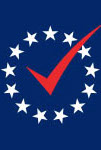Date Published: 2008-11-30
Author(s):
R. Michael Alvarez, California Institute of Technology
Stephen Ansolabehere, Massachusetts Institute of Technology
Catherine H. Wilson, Northwestern University
Abstract:
For most Americans, voting requires two steps. First, an eligible citizen must register in some manner with an appropriate government agency. Second, once registered, the citizen can then cast a ballot on or before election day. The historical record provides examples of voter registration processes as early as 1801 in the state of Massachusetts, followed by Columbia, South Carolina in 1819, the state of Pennsylvania in 1836, and New York City in 1840. After the Civil War, voter registration systems proliferated throughout the nation, especially in large urban areas of the county. By 1929, only Arkansas, Indiana and Texas did not have voter registration systems in place. Today, only North Dakota has no voter registration.
Generally, voter registration procedures were established to confront voter fraud. In urban areas, where political machines were entrenched, voter registration practices were enacted to combat certain practices of political machines. Thus, voter registration procedures were often enacted as a component of a broad package of election reform, aimed at reducing fraud and corruption by political machines.
Voter registration practices also limited the pool of voters. Over American history, requirements for voter registration have included residency, property or income, gender and race or ethnicity. The exact set of requirements varied by location, with different political parties trying to disqualify the constituents of their opponents from the right to vote. The imposition of voter registration requirements, and the other election reforms enacted at the beginning of the 20th Century, had dramatic effects on voter participation. Hansen (2001) reports that turnout declined in the South from 64.2% in 1888 to 29.0% in 1904. Outside the South, turnout fell from 86.2% in 1888 to 67.7% in 1912. Clearly the imposition of voter registration requirements imposed an important new hurdle on voter participation in the United States.
The hurdle of voter registration stands higher for certain groups of voters. The seminal work by Rosenstone and Wolfinger (1980), using the 1972 Current Population Survey’s Voter Supplement (CPS-VS), demonstrated that voter registration practices --- in particular practices like the extent to which election offices were open in evenings and during weekends, absentee voting, and the length of the pre-election closing period, all had some effect on voter turnout because they made it more difficult and costly for voters to participate. But the registration closing deadline had by far the greatest impact on turnout in the Rosenstone and Wolfinger study; residents of states with 30-day closing deadlines were anywhere from 3 to 9 percent less likely to turnout than residents of states with election day voter registration. And the impact of the registration closing deadline was greater for voters with lower levels of educational attainment, and those who were generally less able to navigate the voter registration process in their state.
Reform of the voter registration process, especially in recent decades, has focused on making procedures easier to navigate, and on developing multiple points of access into the voter registration process for potential voters. The most significant recent reform, the National Voter Registration Act (NVRA) of 1993, mandated that states provide citizens the opportunity to register or re-register to vote at many public facilities. NVRA also made it more difficult for election officials to “purge” voting rolls.
In some significant ways, NVRA has worked. In the 2000 Current Population Survey, 40% of those who said they were registered reported having registered at a Department of Motor Vehicles’ office, 17% at a voter registration office, and 12% by mail. Unfortunately, there has been little clear impact of NVRA on overall levels of voter registration and turnout. According to statistics collected by the Federal Election Commission (FEC), 68% of eligible voters nationwide were registered in 1992 and 61% of the voting aged population participated in that presidential election before NVRA was passed and implemented; by 2000, only 64% of the eligible electorate was registered and 55% of the voting aged population participated in that election.
The absence of a surge in registration and participation in the 1990s has caused many to question whether more can be done to increase voter turnout. One registration reform that has recently caught the attention of election reformers is election day registration, in other words, translating the current two-step voting process into a one-step process. As Rosenstone and Wolfinger found, and as subsequent research that we will discuss below has verified, election day registration can increase turnout significantly. Six states currently allow voters to register at polling places on election day: Maine, Minnesota and Wisconsin (adopting it statewide in 1976); Idaho, New Hampshire, and Wyoming (each adopting it prior to the 1994 elections to avoid implementation of NVRA reforms).
In this paper we review the literature on the linkage between voter registration and turnout, with a particular emphasis on how election day registration works and how it impacts voter turnout. We then present our analysis of the 2000 CPS-VS, in which we estimate the potential national impact of election day registration in the United States. Using a novel counterfactual analysis, we examine not only the question about how much voter registration and turnout would increase if every state used election day registration, we also estimate the impact of this change on the composition of the American electorate. We find that the very groups who would be expected to find election day registration an easier process, those who are younger, more residentially mobile, lower on the socioeconomic ladder, nonwhite, and newly naturalized citizens of the US, would benefit in important ways from election day registration. We conclude with additional discussion of some of the criticisms of election day registration, and a discussion of the current political climate for its possible implementation.
